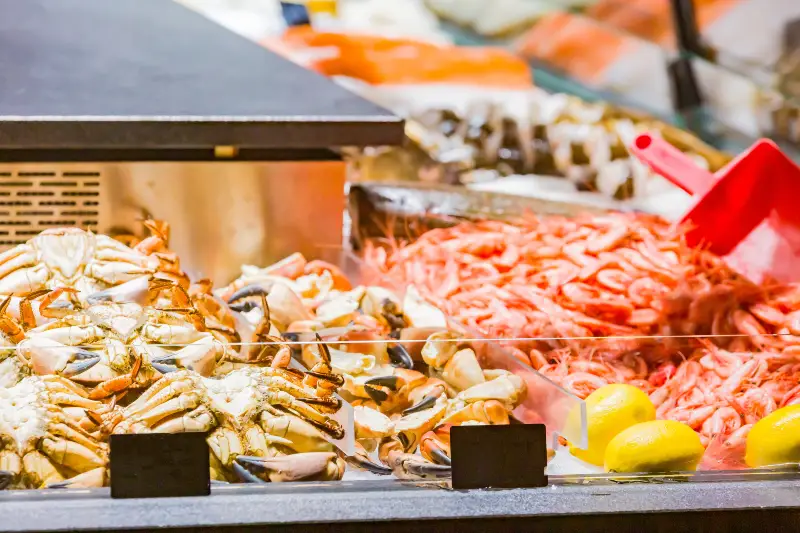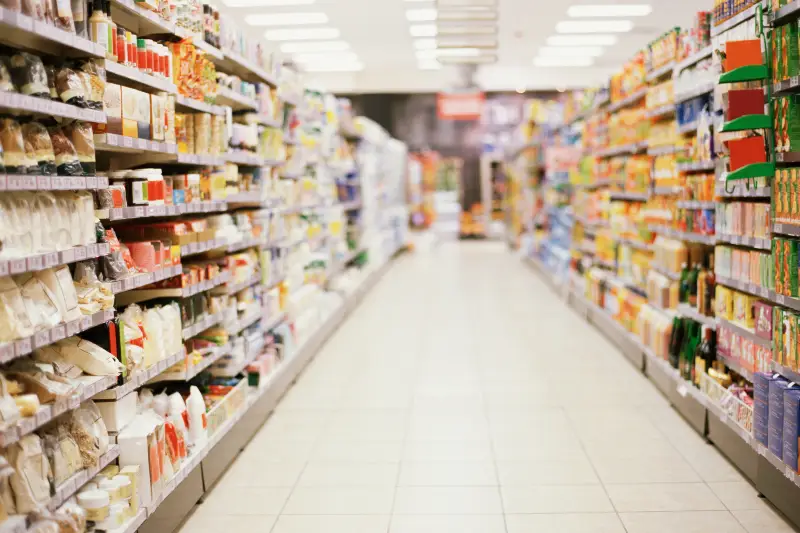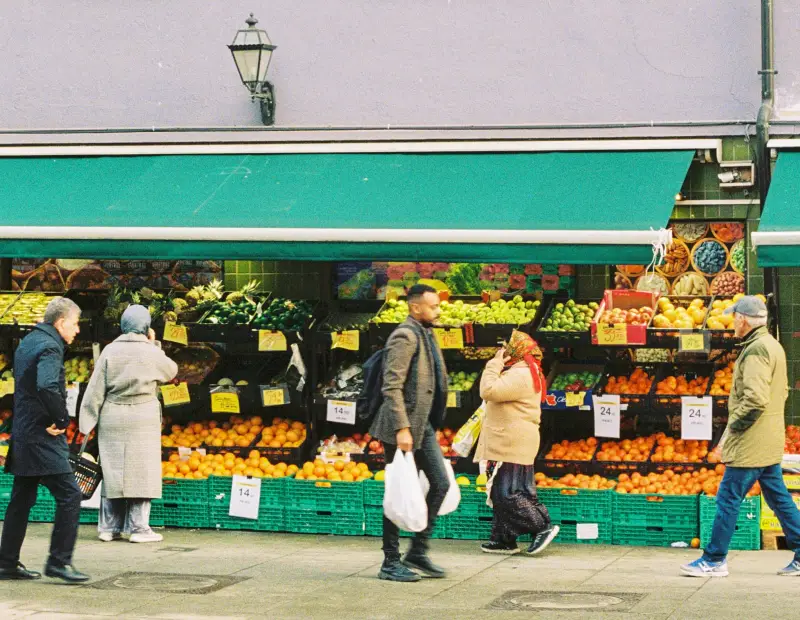A comprehensive guide to the best supermarkets in Norway, written by a local, designed for anyone traveling to Norway or relocating to the country. While most villages have only small grocery stores, the main cities boast large supermarkets that typically offer an extensive selection of products at more affordable prices.
Given Norway’s reputation for its high cost of living, a practical guide to the finest and most economical supermarkets in the country could prove invaluable. This guide will help you swiftly and effortlessly discover how to shop for the best value for your money.
What you will find in this guide to Supermarkets in Norway:
Supermarkets In Norway: All You Need to Know
When it comes to grocery shopping in Norway, there are a few key players in the supermarket scene that you should know about. While navigating the Norwegian supermarket landscape might seem a bit daunting at first, especially if you’re new to the country, a rundown of the main chains and what to expect can make your regular food shopping a breeze.
Despite its reputation for having Europe’s most expensive groceries, Norway offers a range of grocery stores to cater to different budgets. However, it’s important to note that prices here generally tend to be higher compared to many other countries, owing to Norway’s status as one of the world’s richest nations. If you’re looking to stick to a budget, there are strategies to keep costs in check.
The selection of products you’ll find at Norwegian supermarkets can vary based on the specific store and location. While the variety might not match that of countries like the US and UK, you’ll still be able to find the essentials you need. Given Norway’s extensive coastline, it’s no surprise that seafood options in supermarkets are notably excellent, including a wide selection of fish products like salmon, cod, and prawns, available both fresh and frozen.

If you’re searching for fresh produce, be aware that the options might not be as abundant as you’d find in some other countries. Due to Norway’s challenging agricultural landscape, a significant portion of produce is imported, leading to higher prices for certain items. Despite this, you’ll still be able to find meat, dairy, and vegetables among the standard offerings at most grocery stores.
When it comes to the shopping experience itself, you’ll likely find Norwegian supermarket staff to be helpful and friendly, ready to assist you if needed. However, don’t expect extensive small talk or assistance in bagging your items, as you’ll be expected to do that yourself. It’s also advisable to bring your own bags for packing, as plastic bags often come with a (pretty expensive) cost.
In addition to food, many Norwegian grocery stores also stock a range of household items, from personal care products like shower gel, deodorant, and body lotion, to household essentials like washing-up liquid and toilet paper. If you’re in need of babycare items or other necessities, you’ll likely find them here as well.
Best & Cheapest Supermarkets in Norway
When venturing through the stunning landscapes of Norway, a concern that often strikes travelers is the country’s reputation for steep prices. From fjord-hugging towns to the bustling streets of Oslo, the cost of living here can leave even the thriftiest of visitors feeling a pinch. Among the expenses that warrant a savvy approach are groceries, a necessity for any journey. Luckily, Norway is home to a selection of budget-friendly supermarkets that cater to cost-conscious consumers.
Three supermarket chains – Rema 1000, Coop Extra, and Kiwi – stand out as champions of affordability in this land of fjords and folklore. These “low price supermarkets” consistently offer prices 10 to 15 percent lower than their counterparts, making them the go-to choices for wallet-friendly shopping excursions. While each brand competes for the title of the cheapest, Rema 1000 and Kiwi often lead the pack according to national tests conducted by newspapers. You’ll find them peppered across cities and even smaller towns.

Norway’s competitive grocery market means you’ll be spoiled for choice with a higher number of stores per capita than you might be accustomed to. These low-cost supermarket chains carry a variety of products, including both regular and budget-friendly brands. The likes of Rema 1000, Coop Extra, and Kiwi stock similar items to their pricier counterparts, ensuring that you can savor your favorite flavors without depleting your travel fund.
Keep an eye out for wallet-savvy private labels like First Price, X-tra, and Prima – staples that grace the shelves of all Norwegian supermarkets. These alternatives, often priced at a third or half of their branded equivalents, maintain a quality that won’t leave you feeling short-changed. While you can find these options in any store, they’re even more budget-friendly in the low-price supermarket chains.
REMA 1000
REMA 1000, Norway’s largest discount supermarket chain, established in 1979, is a practical option for everyday shopping. With its headquarters nestled in Oslo, the chain extends its presence to Denmark as well. The uncluttered layout of most REMA 1000 stores facilitates easy navigation. REMA 1000 outlets boast an array of staple food items, making it a convenient destination for those seeking essentials for home-cooked meals. The chain also dedicates a section near the entrance to a variety of freshly baked goods.
With 868 stores in Norway and a workforce exceeding 20,000 employees, REMA 1000 operates under the broader Reitan Group, named after its founder, the prominent figure Odd Reitan. Inspired by Germany’s Aldi, the concept behind REMA 1000 was to streamline offerings to lower prices. However, the chain later expanded its product range to better cater to the Norwegian market.
For frequent patrons, the Æ app is a valuable asset. Members enjoy a 10% discount on fruits, vegetables, and their top 10 most purchased items. Furthermore, exclusive offers are a recurring perk for app users. Membership is free, and the app, when linked to your debit card, ensures seamless application of discounts during checkout.
Kiwi
Kiwi is another prominent Norwegian grocery chain, quite popular among budget-conscious shoppers across the nation. Kiwi’s popularity shines particularly among loyalty program members who appreciate its cost-effective offerings. Similar to REMA 1000, Kiwi doesn’t flaunt extravagance. Instead, it caters to those seeking essentials, making it a go-to destination for routine grocery needs. Scattered throughout the country, Kiwi supermarkets are conveniently accessible in both major cities and smaller settlements.
Kiwi bolsters its reputation as one of Norway’s formidable supermarket players, boasting nearly 500 discount stores. Kiwi operates under the same umbrella as Meny, another supermarket giant, alongside smaller convenience outlets like Joker and Mix.
What sets Kiwi apart for many, including myself, extends beyond its competitive pricing. The layout of Kiwi stores is often lauded for its user-friendly design, simplifying the shopping process. Whether you’re seeking a reliable destination for routine grocery trips or a budget-conscious choice, Kiwi’s unpretentious appeal and wide accessibility make it a cornerstone of Norwegian shopping culture.
Coop
Coop is another very popular chain of supermarkets in Norway, boasting an extensive network of stores peppered across the country, encompassing a mix of smaller, convenient outlets and larger emporiums, particularly prominent in the Oslo region. Much akin to its counterparts in the realm of discount supermarkets, Coop proffers a diverse array of merchandise. It serves as a valuable resource for unearthing those elusive items that may have slipped through the cracks at REMA 1000 or Kiwi.
Originating in 1906 under the banner of NKL (Norges Kooperative Landasforening), which translates to Norwegian Cooperative Association, Coop Norge AS has flourished into one of the nation’s premier supermarket chains. Coop takes on various guises in terms of shop formats and dimensions. Ranging from Coop Prix, the petite iteration, to the expansive Coop Mega, they span the spectrum of shopping experiences.
Characterized by their crimson color palette, the flagship Coop outlets emanate a sense of familiarity. Expanding their reach further, Coop’s also own Obs, a hypermarket and hardware stores and Matroken, a smaller grocery venture.
Bunnpris
Bunnpris is another reasonably-priced supermarket in Norway, and has quietly woven itself into the fabric of local life, boasting over 250 branches primarily spread across central and northern Norway, as well as in Oslo. In the capital, the stores take on a cozy convenience store vibe, making the most of limited space to offer a range of products while remaining open even on Sundays.
Founded in 1981 with its inaugural outlet in Trondheim, Bunnpris quickly gained traction, enabling its rapid expansion across the nation. Bunnpris provides weekly offers that significantly slash prices on everyday essentials. This strategy has won the hearts of cost-conscious Norwegians, as Bunnpris stands as another wallet-friendly option in the realm of Norwegian grocery shopping.
Other Popular Supermarkets in Norway
The ones seen so far are undoubtedly the most popular supermarkets in Norway, especially on the budget-friendly side. But there are many other chains that are well spread across the country, which are definitely worth exploring with their pros and cons, as you will surely come across them on your stay in Norway.
In the center of Oslo it will be easy to come across the lively Narvesen shops, which with over 300 outlets scattered throughout Norway, is the go-to convenience store for both locals and travellers. Unlike its larger counterparts, Narvesen caters to those looking for quick essentials and a quick snack. Prices on most of Narvesen’s items are on the high side, but they’re also a popular spot for a quick bite: hot dogs stand out as an affordable treat, popular with locals. Narvesen’s breakfast offerings, which offer coffee and pastries, prove to be a saving grace for those taking morning excursions or staying where breakfast isn’t provided.
Spar, on the other hand, falls lower on the popularity scale due to its limited selection and relatively high prices. While the grocery chain’s range may not impress, its offering of hot food serves as a savior for tourists and travelers seeking a quick and warm meal on the go. Nonetheless, Spar’s charm diminishes in the face of more budget-friendly options nearby.
Joker supermarkets, though small in scale, are scattered across remote villages where no other stores dare to tread. A haven for those residing in such areas, Jokers offer a reprieve, even though their prices tend to lean toward the higher side. As a silver lining, some Joker stores open their doors on Sundays, a rarity in Norway.
In the realm of extravagance stands Meny, Norway’s premium supermarket chain. With an extensive array of products, including exclusive items, Meny caters to discerning shoppers willing to splurge. Their opulent offering makes Meny the preferred destination for those seeking specialized grocery items beyond the standard fare.
The convenience of 7-Eleven isn’t foreign to anyone who’s traversed Scandinavia, the US, or Japan. In Norway, these stores provide an alternative to traditional supermarket hours with their extended schedules. Despite a reputation for being expensive, 7-Eleven proves handy for budget-conscious weekend travelers seeking quick fixes like sandwiches, hot dogs, and pastries, as well as beverages.
Amidst the major players, enterprising immigrants have also set up shop, introducing a treasure trove of global flavors. These international markets, often found in cities big and small, offer an extensive selection of imported delicacies. In a surprising twist, the quality and variety of fresh produce often surpass those found in mainstream supermarkets, all while offering a more budget-friendly option that embraces sustainability by eschewing excessive plastic packaging.

Opening Hours of Supermarkets in Norway
On weekdays, supermarkets in Norway generally open their doors between 06:00 and 08:00 in the morning, catering to early risers and those looking to start their day with a shopping spree. The weekend schedule sees a slightly later start, with opening hours spanning from 07:00 to 09:00. But you have to take into account that most of the supermarkets may be closed, due to local rules which I will explain better shortly.
Closing times of supermarkets exhibit variation based on their location. While city-center establishments, especially in Oslo, might extend their operational hours, rural locales tend to observe stricter closing times. As a general rule, supermarkets tend to close their doors between 21:00 and 23:00. Additionally, if you find yourself in need of essentials during the late hours, certain convenience stores such as 7-Eleven come to your rescue, staying open until midnight or even as late as 04:00 on weekends, ensuring you never run out of supplies.
Are supermarkets in Norway open on Sunday?
A quirk of Norwegian law dictates that only retail stores below a certain size, typically 100 square meters, are allowed to open their doors on Sundays. While the majority of supermarkets remain closed on Sundays, there are some exceptions that cater to the Sunday shopper.
Notably, the Bunnpris chain has ingeniously worked around this law. Some stores set up specialized sections that operate exclusively on Sundays, giving locals and visitors the chance to pick up necessities when needed. Another player in the Sunday shopping game is Joker, which boasts smaller supermarkets that often keep their doors open on this quiet day. Keep in mind, though, that these options may lean toward the pricier side, encouraging shoppers to stick to the essentials. Operating hours on Sunday are generally limited to a window between 10 am and 4 pm, or 11 am and 5 pm.
Norwegian laws allow some flexibility for supermarkets to operate on select public holidays, such as Pentecost and Christmas Eve. However, these holiday openings come with a caveat – these establishments should cease operations no later than 4 pm. On the other hand, a visit to Norway during other prominent public holidays, like the spirited 17th May festivities, may lead to a different experience, as most of the supermarkets in Norway keep their doors closed.
Can I pay by card in supermarkets in Norway?
Sure! Norway stands at the forefront of the cashless revolution, a trend prominent in the Nordic countries. Among them, Norway shines as a pioneer in adopting cashless transactions, rendering physical notes virtually obsolete. In Norway, the customary practice involves using debit cards to settle grocery bills. The prevalence of contactless payment systems is ubiquitous across most supermarkets, although cash is obviously welcome. Supermarkets in Norway only accept Norwegian Kroner (NOK or kr), so forget about paying in dollars, euros or pounds.